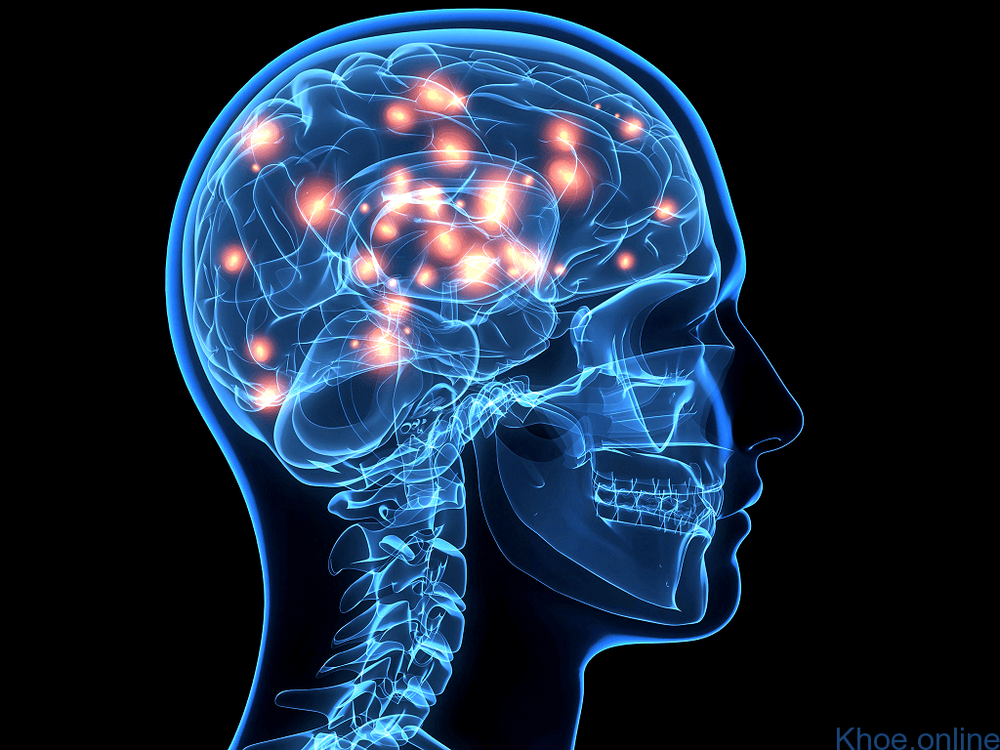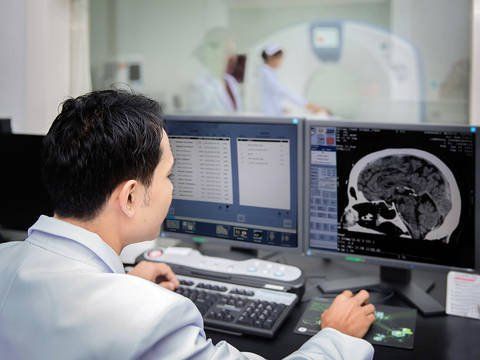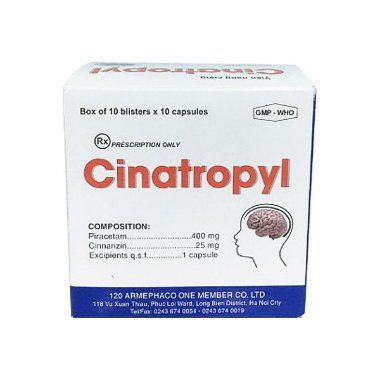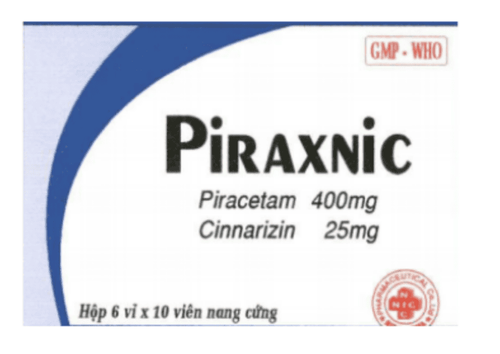This is an automatically translated article.
The article was written by Dr. Dr. Phung Tuyet Lan - Head of Pediatric Inpatient Unit 3 - Pediatric Center - Vinmec Times City International Hospital.Ocular nystagmus - myoclonus syndrome (OMS - Opsoclonus - myoclonus syndrome) or nystagmus - myoclonus - ataxia is a syndrome that includes the following manifestations: nystagmus, focal or diffuse myoclonus , unsteady gait or may be accompanied by other cerebellar signs.
1. What is OMS syndrome?
Opsoclonus is a movement disorder of the eyeballs characterized by sudden, spontaneous, irregular, all-directional eye movement, myoclonus, which is a clinical sign. characterized by brief, rapid, involuntary movements caused by muscle contraction or restraint.
Patients with OMS are sometimes described as having “dancing eye dancing feet”. The cause of this syndrome can be cancer (hence the term paraneoplastic syndrome) or non-cancerous (nonparaneoplastic) disease such as infection, after vaccination.
OMS syndrome in children is rare, with an estimated frequency of 0.18-0.2 cases per 1 million children/year. The mean age of prevalence is 1.5 to 2 years, and the incidence is higher in girls than in boys in some studies.
The immune mechanism is thought to be the pathogenesis of paraneoplastic or non-cancerous OMS syndromes, however, the specific autoantibody that causes disease in children has not been identified.

Studies have shown that in sick children, there is an increased level of anti-neural tissue antigen (NF210K antibody, anti Purkinje cell antibody, antineuronal antibody), increased levels of inflammatory response regulators such as chemokines (CXCL 13, CXCL 10...), cytokines (IL6, IL1..). And the clearest evidence for autoimmune mechanism is the patient's response to immunosuppressive drugs such as corticosteroids, IVIG, and rituximab.
The most common cancer in children with OMS syndrome is neuroblastoma. Studies show that about 50% of children with OMS are found to have neuroblastoma, and conversely, about 2% of children with neuroblastoma have OMS syndrome.
In some cases the cause of noncancerous OMS syndrome in children is thought to be infection: Epstein-Barr virus, Coxsackie B3, Hepatitis C virus, Lyme disease, postpneumococcal infection, Rotavirus, Mycoplasma pneumoniae . There are case reports of OMS syndrome in patients with celiac disease.
Clinically the disease has a non-acute onset with symptoms of ataxia and progressive falls that increase by days and weeks. Next may appear muscle twitches of the extremities and trunk, tremors, decreased muscle tone.
Patients with behavioral changes (usually arousal), moderate or severe sleep disturbances are common. Nystagmus may or may not be present at baseline at diagnosis.
This is the most characteristic symptom, appearing late can lead to delay in diagnosis, especially in patients without neuroblastoma. These neurologic symptoms present in 50% of cases before the patient is diagnosed with neuroblastoma, vary in severity and may be persistent.

Diagnosis of OMS syndrome in children is based on clinical evidence because currently there is no specific test to confirm the diagnosis. All patients with OMS syndrome should be screened for neuroblastoma according to the following protocol: MRI of the chest, abdomen, pelvis; quantification of cancer markers VMA and HVA in urine; MIBG scan with I-123; and specific tests if a tumor is found.
Patients were also assigned brain MRI to rule out structural lesions. Depending on the clinical manifestations, the patient will be screened to rule out infectious and toxic causes....
Cerebrospinal fluid test is indicated in all cases. Patients with OMS syndrome may have an increased number of lymphocytes in the cerebrospinal fluid, especially the B cell population.
Treatment of OMS syndrome includes treating the cause (neuroblastoma...) and immunosuppressive therapy. The commonly used immunosuppressive drugs are Dexamethasone, ACTH, Cyclophosphamide, IVIG, Rituximab, alone or in combination, for a long time. Patients with neuroblastoma are treated (surgery, chemotherapy, radiotherapy...) according to risk group classification.
Cancer prognosis in neuroblastoma patients with OMS syndrome is quite good because the tumor is often localized. The neurological prognosis is rather conservative. According to some studies, more than 50% of patients have abnormalities of various degrees in psychomotor development: speech, cognition, concentration, sleep disorders, movement disorders ...
In summary, OMS is a rare syndrome in children, diagnosed so far based on clinical symptoms, neuroblastoma should always be screened in these patients.
Combination therapy between cancer treatment combined with long-term immunosuppressive therapy. Early diagnosis and treatment can reduce neurological sequelae that affect a child's quality of life.
Please dial HOTLINE for more information or register for an appointment HERE. Download MyVinmec app to make appointments faster and to manage your bookings easily.














